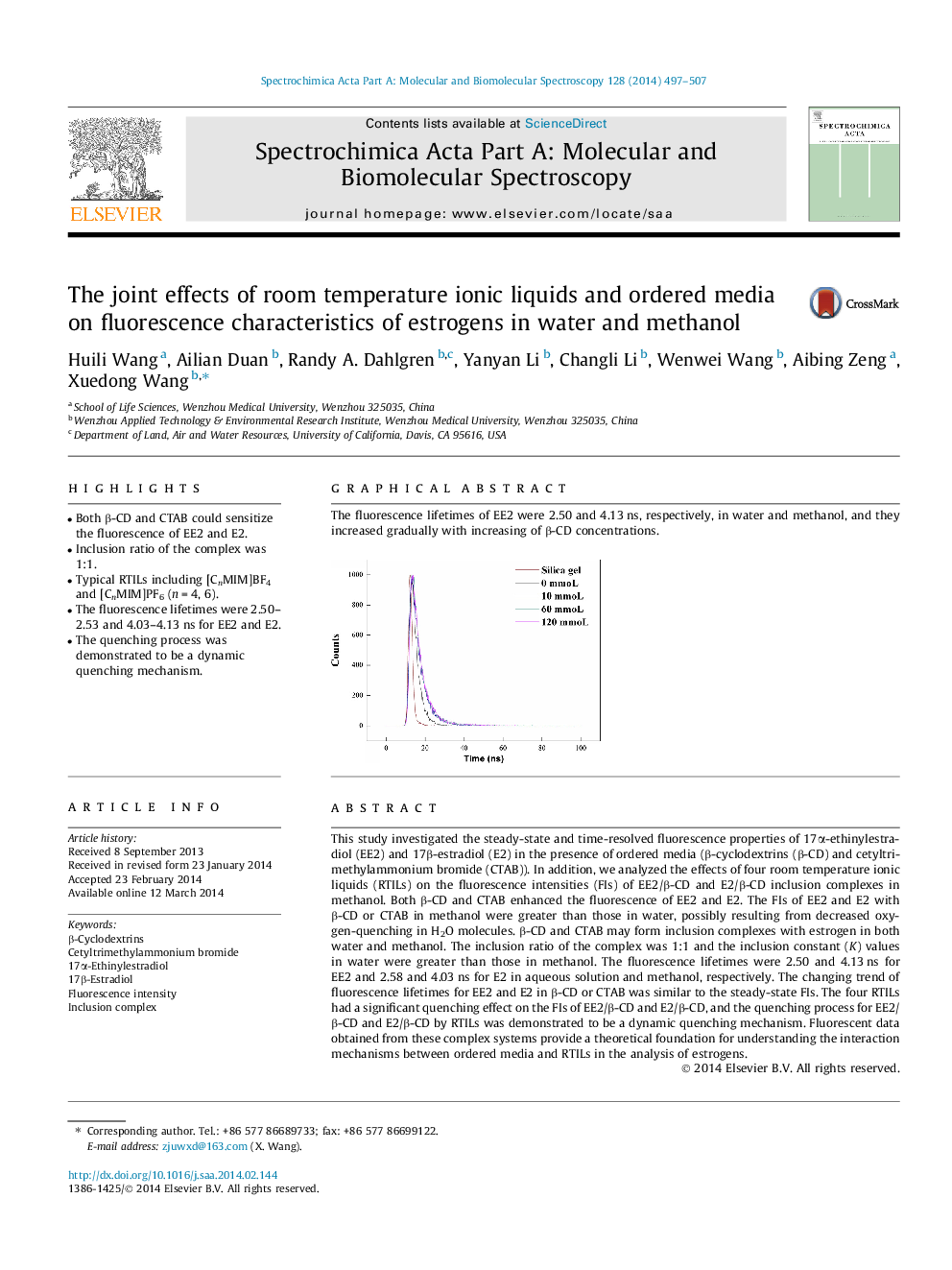| کد مقاله | کد نشریه | سال انتشار | مقاله انگلیسی | نسخه تمام متن |
|---|---|---|---|---|
| 1230601 | 1495240 | 2014 | 11 صفحه PDF | دانلود رایگان |
• Both β-CD and CTAB could sensitize the fluorescence of EE2 and E2.
• Inclusion ratio of the complex was 1:1.
• Typical RTILs including [CnMIM]BF4 and [CnMIM]PF6 (n = 4, 6).
• The fluorescence lifetimes were 2.50–2.53 and 4.03–4.13 ns for EE2 and E2.
• The quenching process was demonstrated to be a dynamic quenching mechanism.
This study investigated the steady-state and time-resolved fluorescence properties of 17α-ethinylestradiol (EE2) and 17β-estradiol (E2) in the presence of ordered media (β-cyclodextrins (β-CD) and cetyltrimethylammonium bromide (CTAB)). In addition, we analyzed the effects of four room temperature ionic liquids (RTILs) on the fluorescence intensities (FIs) of EE2/β-CD and E2/β-CD inclusion complexes in methanol. Both β-CD and CTAB enhanced the fluorescence of EE2 and E2. The FIs of EE2 and E2 with β-CD or CTAB in methanol were greater than those in water, possibly resulting from decreased oxygen-quenching in H2O molecules. β-CD and CTAB may form inclusion complexes with estrogen in both water and methanol. The inclusion ratio of the complex was 1:1 and the inclusion constant (K) values in water were greater than those in methanol. The fluorescence lifetimes were 2.50 and 4.13 ns for EE2 and 2.58 and 4.03 ns for E2 in aqueous solution and methanol, respectively. The changing trend of fluorescence lifetimes for EE2 and E2 in β-CD or CTAB was similar to the steady-state FIs. The four RTILs had a significant quenching effect on the FIs of EE2/β-CD and E2/β-CD, and the quenching process for EE2/β-CD and E2/β-CD by RTILs was demonstrated to be a dynamic quenching mechanism. Fluorescent data obtained from these complex systems provide a theoretical foundation for understanding the interaction mechanisms between ordered media and RTILs in the analysis of estrogens.
The fluorescence lifetimes of EE2 were 2.50 and 4.13 ns, respectively, in water and methanol, and they increased gradually with increasing of β-CD concentrations.Figure optionsDownload as PowerPoint slide
Journal: Spectrochimica Acta Part A: Molecular and Biomolecular Spectroscopy - Volume 128, 15 July 2014, Pages 497–507
